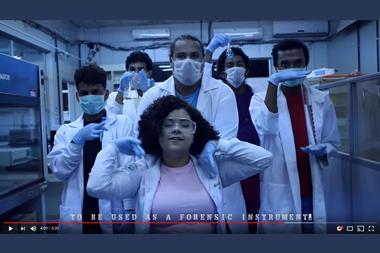A modern dance choreography that depicts how important social interactions are in the brain development of zebrafish has won this year’s Dance your PhD competition. Now in its 12th year, the annual award hosted by Science and the American Association for the Advancement of Science challenges doctoral students to bring their research to the wider public using interpretive dance.
Neuroscientist Antonia Groneberg from Charité University Hospital in Berlin, who won the contest’s top prize, has been a dancer since childhood and has taught jazz and modern dance as she pursued her PhD at Champalimaud Research in Portugal. Her work described in the winning video explored the effect of the motion of groups of zebrafish larvae on each individual animal’s brain development and behaviour. ‘We used to joke that my PhD was easily danceable as it’s about movement,’ Groneberg said. ‘Some colleagues accused me of picking my thesis topic because of that!’
A panel of nine judges selected Groneberg’s submission out of 30 entries. It features her colleagues, as well as dance students and their children. As winner of both the social science category and overall prize, she will take home $1000 (£774).
Jackie Zorz and colleagues from the University of Calgary scooped the chemistry category award for her performance that showcased the struggles and triumphs of a cyanobacterium in the world of bioenergy. Her video portrayed how cyanobacteria could be part of an integrated approach to improving the efficiency of microbial bioenergy systems.
The physics award went to Samuli Junttila from the Centre of Excellence in Laser Scanning Research in Finland, for a video featuring an original rap about how multispectral lidar scanning of forests can enable the detection and assessment of tree decline caused by different stressors. The judges called the entry ‘hilarious and yet scientifically informative’.
Katharina Hanika from Wageningen University and Research in the Netherlands won the biology prize with a belly dancing video that explained how tomato plants’ resistance to disease could be improved by identifying and impairing susceptibility genes to Verticillium dahlia fungal infection.























No comments yet